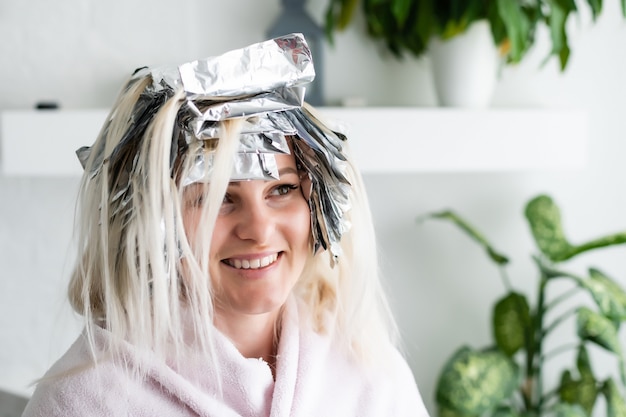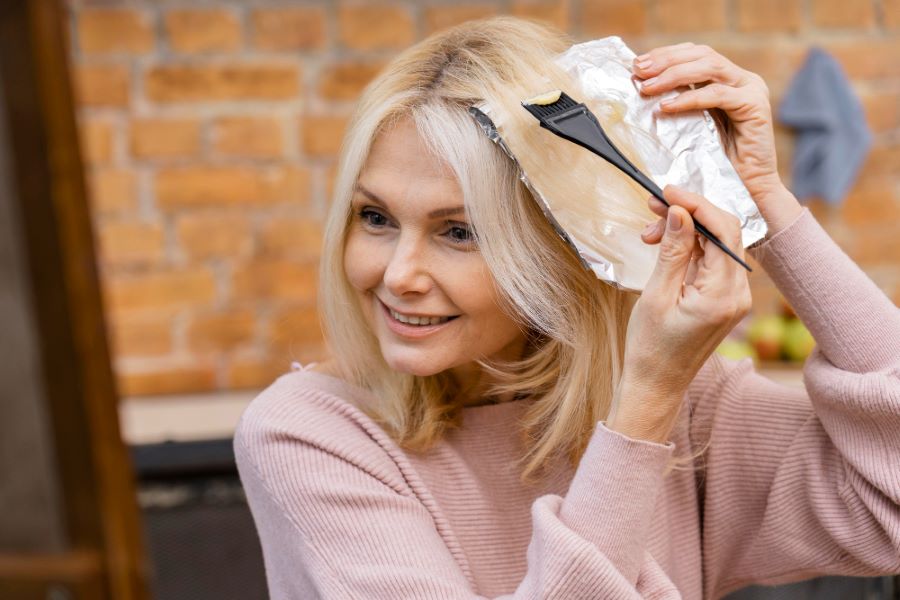In this fast-paced world, it is essential to find time for cost-effective solutions to improve our beauty routine. This article is for those who want to maintain or transform their hair color without frequent visits to the salon.
Whether you are a busy professional, a budget-conscious student, or just want to explore the world of home hair coloring, you will find practical and effective tips here. Try to minimize unnecessary expenses and save time – let’s explore how to get salon-quality hair color at home.
1. Understanding hair coloring at home
Have you ever wondered why you should dye your hair at home? Before we dive into the process, let’s explore why coloring your hair at home can be an intelligent choice.
Here are a few reasons:
- Cost-effectiveness: Significantly cheaper than salon visits.
- Time-saving: Colour your hair at your convenience without having to schedule appointments.
- Individual approach: You can experiment with shades to suit your preferences, which can be a plus and a minus.
2. Choosing the right hair colour
Carefully explore the wide range of hair colours and choose the one that suits you best. Choosing the right colour is essential to achieving the look you want.
Consider:
- Natural shades: Ideal for subtle changes in hair colour or to cover grey tones.
- Bright colours: Ideal for drastic changes.
- Garnier hair colour: the preferred brand due to its quality and range of shades.

3. Essential tools for home hair colouring
Think about all the tools you need for a home hair colouring treatment. Gather these tools to ensure a smooth and efficient colouring process.
You will need:
- Hair colouring kit (e.g., Garnier)
- Gloves
- Timer
- Old towel or cape
- Comb and clips
4. Preparing your hair
Hair must be adequately prepared to achieve the best results for hair colouring. Proper preparation can significantly impact the outcome of your hair colouring.
Recommendations:
- Clean hair: Wash your hair 24-48 hours before colouring.
- Patch test: Always perform a patch test in case of allergies.
- Sectioning the hair: This is important for an even application of hair colour.
5. Application techniques
Follow these steps to ensure a smooth and successful application.
Step by step:
- Mixing the colour: Follow the instructions on the hair colour kit.
- Styling and application: Start from the roots and work your way down.
- Time is of the essence: Follow the recommended colour build-up time.
6. Post-colouring care
After colouring, proper care is essential to maintain the vibrancy and health of your hair. Supporting the new shade may not be easy, so there are a few things to remember.
Observe:
- Use colour-safe shampoos: Keep your colour vibrant.
- Regular use of conditioner: This keeps your hair healthy and shiny.
- Maintenance: Ensure your hair is conditioned every 4-6 weeks.
7. Common mistakes to avoid
Ensure a smooth hair colouring process for a successful home colouring experience. Avoid these common mistakes to ensure a successful home hair colouring experience.
Avoid:
- Skipping the pinch test.
- Use metal utensils or containers.
- Overlapping colour on previously coloured hair.
8. DIY hair colouring ideas
The process of colouring your hair at home can be creative and fun, and the results can be original. Get creative with these DIY hair staining ideas for a unique look.
Experiment:
- Ombre effect: Gradual overlapping of one colour shade with another.
- Bright shades: Adding depth and dimension to the hair.
- A more natural look: The freehand technique for a more natural look.
9. Eco-friendly practices
Introduce these eco-friendly techniques into your hair colouring routine.
- Recycle packaging materials.
- Choose brands that support sustainability, such as Garnier.
- Limit water consumption during the colouring process.
10. Troubleshooting common issues
However, although there may be many advantages to dyeing your hair at home, accidents can often happen. Here’s how to deal with some common problems that can occur during or after hair colouring.
Take note:
- Too dark a colour: Use a cleansing shampoo to lighten the hair.
- Uneven application: Use a colour remover or see a professional.
- Allergic reactions: Consult a doctor immediately.
Conclusion
Colouring your hair at home is a practical, fun, and effective way to change your look without spending too much money and time. By following these tips, you can achieve professional-looking results, keep your hair healthy, and enjoy the process of transforming your look.
Remember, the key to effective home hair colouring is preparation, careful application, and after-care. Stay tuned to EsiEfektivs.lv for more effective lifestyle tips!
Read more articles:

